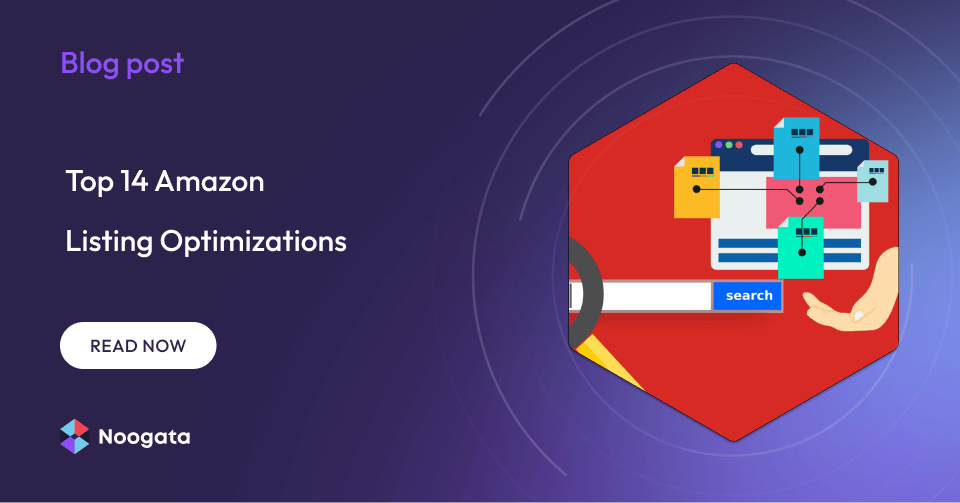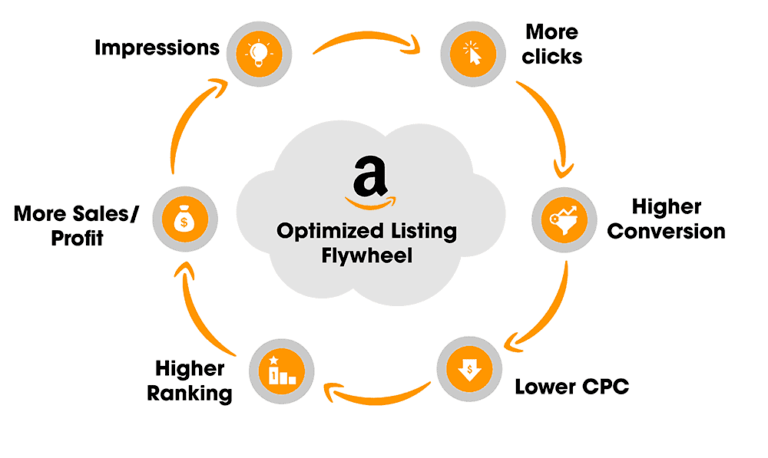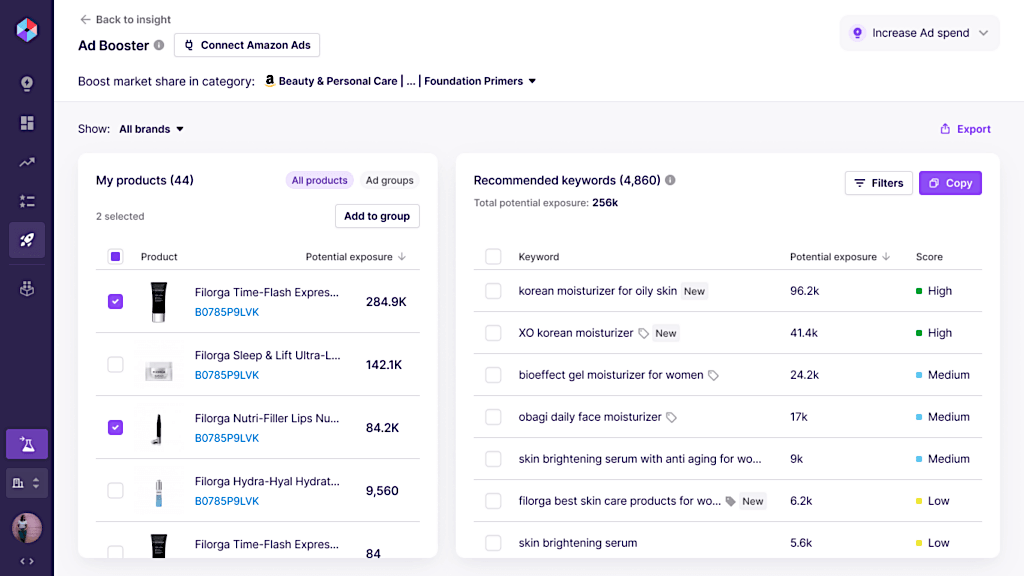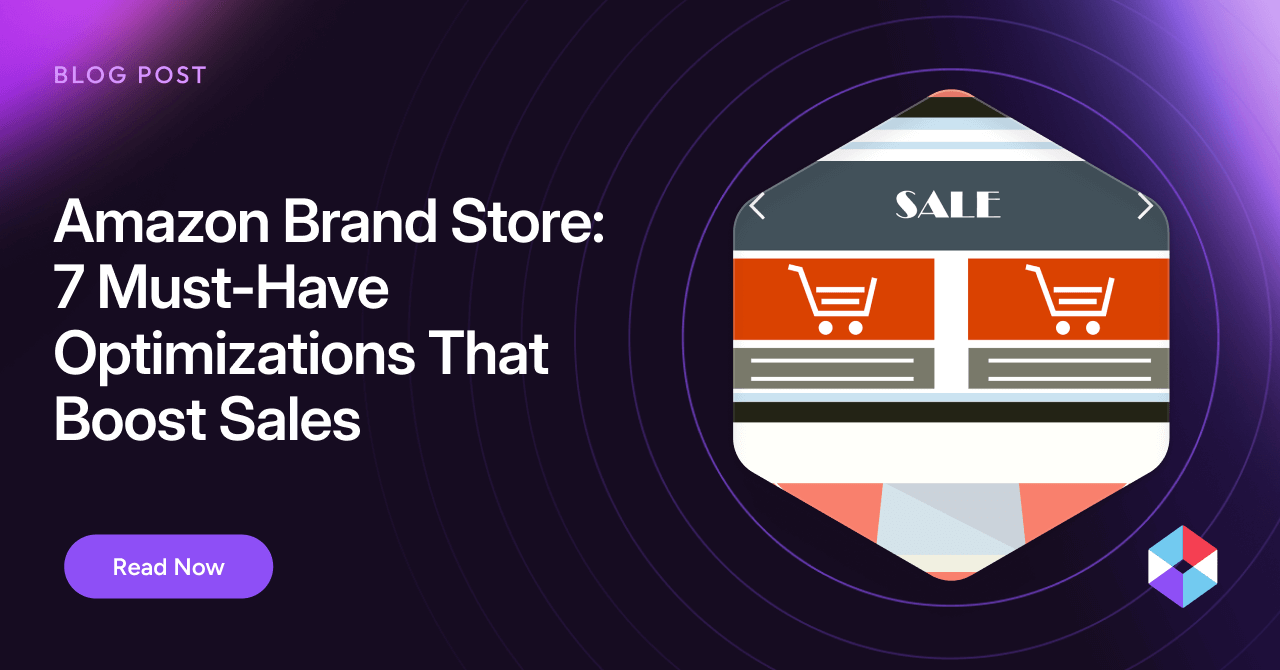To sell successfully on Amazon, creating effective product listings is crucial. How you present your products greatly influences shoppers’ decisions to purchase—sometimes even more than the product quality itself. A great listing should be attractive, informative, and engaging. However, many sellers overlook essential elements like up-to-date keyword research and product videos. If every part of the listing isn’t optimized, you’ll miss out on significant sales opportunities.
How significant? 54% of Amazon shoppers rate listing quality as the top factor influencing their purchases. Considering that 2.4 billion potential customers visit Amazon daily, your listing could generate massive sales if you give it the proper attention.
Fortunately, optimizing your listing isn’t an overly complicated magic trick. Here are the top fourteen Amazon listing optimizations to help you generate more conversions.
What is Amazon listing optimization, and why do your products need it?
Amazon listing optimization is the process of enhancing your product pages to improve their visibility, click-through rate (CTR), and conversion rate on Amazon’s platform. This process involves a detailed approach to refining your product titles, descriptions, keywords, images, and other listing elements to meet the twin goals of aligning with what potential customers are searching for and meeting the Amazon A10 algorithm’s criteria.
Amazon’s algorithm prioritizes listings that demonstrate relevance and quality to a shopper’s query, using factors like keywords, sales performance, and customer feedback. By optimizing these areas, your products become more discoverable to shoppers actively searching for items like yours.
But product visibility is just one piece of the puzzle. Once a potential buyer finds your listing, it must capture their interest and convince them to purchase. High-quality images, compelling descriptions, and clear, benefit-focused bullet points play crucial roles in converting views into sales.
The best part of Amazon listing optimization is that a fully optimized product listing creates a self-sustaining flywheel that continues to increase visibility and sales.
Benefits of Amazon Listing Optimization
Here’s why Amazon listing optimizations are non-negotiable for your products:
- Increased Visibility – Optimized listings rank higher in search results, making it easier for potential customers to find the right products among the millions available on Amazon.
- Enhanced Click-through Rates (CTR) – A well-crafted title and eye-catching main image can significantly increase the number of shoppers who click on your listing after seeing it in their search results.
- Higher Conversion Rates – Detailed, benefit-oriented product descriptions and high-quality images encourage shoppers to purchase after clicking on your listing—leading to increased revenue.
- Competitive Edge – Effective optimization helps your products stand out on Amazon, giving you an advantage over competitors who may neglect these crucial details.
The A10 Algorithm’s Role in Amazon Listing Optimization
At the heart of Amazon’s marketplace lies the A10 algorithm, a sophisticated system that determines the visibility of products on the platform. Understanding how the A10 algorithm works is critical for sellers who want to optimize their listings for better performance.
What is the A10 algorithm?
The A10 algorithm is Amazon’s search engine algorithm, responsible for ranking product listings when a customer searches. It’s the next evolution of the A9 algorithm, featuring enhanced improvements and a stronger emphasis on customer needs and experiences.
What does the A10 algorithm do?
The A10 algorithm filters and presents products based on many factors, aiming to match customers with the listings most relevant to their search queries and shopping behavior. It assesses a product’s relevance to the search terms, popularity, customer feedback, and several other performance metrics to determine its position in search results.
How does the A10 algorithm work?
The A10 algorithm works by analyzing various factors, including:
- Keyword Relevance – How well the keywords in your product listing match the customer’s search query.
- Sales Performance – The sales history of your product, where higher-selling items are given priority.
- Customer Satisfaction and Retention – Metrics that are indicators of customer satisfaction, such as review ratings, order defect rates, and return rates, influence the A10’s rankings.
- Price Competitiveness – Competitive pricing can influence your product’s visibility, especially in highly saturated categories.
- Fulfillment Method – Listings fulfilled by Amazon (FBA) often receive a boost in rankings due to the promise of faster shipping and Amazon Prime eligibility.
While seller experiences offer these valuable insights, it’s important to note that the exact workings of Amazon’s A10 algorithm remain shrouded in secrecy.
Top 14 Amazon Listing Optimizations
Here are the Amazon listing optimizations you must make to your product catalog to appeal to both customers and the A10 algorithm:
1. Understanding Your Product and Competition with Competitive Intelligence
Start with a deep dive into market dynamics using competitive intelligence platforms like Noogata. This foundational step helps you understand your position in the market, identify gaps in competitor strategies, and uncover niche opportunities for your product. Use this data to inform all aspects of your optimization strategy, ensuring you’re not just reacting to the market but anticipating changes and opportunities.
2. Keyword Research and Optimization
Utilize advanced tools to thoroughly explore relevant, high-search-volume keywords, prioritizing those with high purchase intent. To target specific queries, include these keywords strategically in your listing, including backend search terms. Regularly refresh your keyword strategy to stay ahead of market trends and seasonality, ensuring your product remains highly visible and relevant.
Noogata can help you identify how consumers search for products in your categories and identify new or seasonal search trends to include in your strategy, increasing the search discoverability for all products on your digital shelf.
3. Compelling Product Titles
Craft your product titles with precision while clearly communicating your product’s unique value proposition. To do this, incorporate 3 or 4 primary keywords with high search volume and those used to search for similar products in your categories. Employ A/B testing to refine and perfect your titles, ensuring they capture attention and drive click-throughs.
This balance of keyword optimization and customer appeal is critical for standing out in a crowded marketplace and is another area where Noogata can help generate perfect keyword-optimized content.
4. High-Quality Product Images
Invest in professional photography to produce high-resolution, engaging images that showcase your product in various contexts and angles. Where possible, consider adding interactive elements (like a 360° option to see your product from all angles) to enhance the buyer’s experience. High-quality visuals are not just about attracting attention—they’re about building trust and confidence in your product.
5. Add Video to Your Listings
Videos are a powerful way to increase engagement and conversion rates, offering a dynamic way to communicate your product’s value. Enhance your listings with high-quality, concise videos that demonstrate your product’s benefits, address common customer pain points, and show how your product enhances a customer’s lifestyle.
Incorporate storytelling elements and customer testimonials to create a compelling narrative around your product. Repost your videos on a YouTube channel for additional lead generation.
6. Optimize Product Descriptions
Craft product descriptions that weave in long-tail keywords naturally, telling your product’s story in a way that resonates with potential buyers. Where available, utilize enhanced brand content to break up text and incorporate visuals, making your descriptions informative, engaging, and easy to digest. Noogata has tools to help you create the ideal listing content and also benchmark your content optimizations with brands in your competitive landscape.
7. Engaging and Informative Bullet Points
Use bullet points to clearly highlight your product’s key features and benefits, integrating targeted keywords without compromising readability. Tailor your bullet points to address your target audience’s specific needs and desires by providing clear, benefit-driven reasons why your product is the solution they seek.
8. Use Amazon’s A+ Content
Brands enrolled in the Amazon Brand Registry can leverage A+ Content to visually differentiate their product from competitors. Use this feature to include comparison charts, detailed feature explanations, and high-quality images that help buyers understand why your product is superior.
9. Pricing Strategy
Implement a dynamic pricing strategy that adjusts in real-time based on market conditions and your competitors’ pricing. Use psychological pricing tactics to make your prices more appealing, and constantly monitor your competitors to ensure your pricing remains competitive in the marketplace without sacrificing profit margins.
10. Encourage Customer Reviews
Develop a proactive strategy for encouraging positive customer reviews, following Amazon’s guidelines to maintain compliance. Utilize follow-up emails and product inserts creatively to remind customers to leave feedback, and regularly monitor reviews for insights into product improvements and customer satisfaction.
Don’t forget that you can answer customer questions with video responses, which helps connect with customers and shows customers that you care about their satisfaction.
11. Optimize for Mobile
By 2025, 44.2% of U. S. retail eCommerce sales will happen on mobile devices. With a significant portion of Amazon traffic coming from mobile, ensure your listings are optimized for mobile viewing. This means concise titles (place your primary keywords at the front of your titles because mobile view usually shows only 80 characters max), fast-loading images, and easy-to-scan bullet points, ensuring mobile users can quickly and easily understand the key benefits of your product.
12. Inventory Management and Fulfillment
Advanced inventory management practices are essential for avoiding stockouts and keeping your listings active. Use tools that provide detailed demand forecasting and inventory alerts to maintain optimal stock levels, ensuring your products are always available when customers want to buy.
Leverage Amazon FBA to handle your logistics, which not only offloads the complexities of fulfillment, storage, and shipping but also boosts your product’s visibility and trustworthiness.
FBA can significantly optimize your product’s listing by:
- Appealing to the A10 algorithm.
- Gaining eligibility for Amazon Prime, which often leads to higher conversion rates because customers value the fast, free shipping and trusted customer service that comes with Prime products.
13. Advertise and Promote Your Listing
Amazon PPC campaigns are an Amazon listing optimization that can generate immediate impact. Craft a comprehensive advertising strategy that includes Sponsored Products, Sponsored Brands, and Sponsored Display Ads. Focus on targeting high-intent keywords and competitor ASINs, optimizing your campaigns based on performance data to maximize ROI.
Consider using retargeting ads to re-engage visitors who didn’t make a purchase on their first visit, and boosting your campaign exposure and sales while protecting your Amazon ACOS (Average Cost of Sales) with Noogata’s advertising tool. It’s also wise to employ social media marketing and other off-platform advertising to drive traffic to your listings.
14. Employ Amazon Product Listing Services
For large sellers with vast catalogs, outsourcing Amazon listing optimizations by partnering with specialized agencies or using software like Noogata is a viable strategy to get things done quickly and at scale. These resources can offer in-depth market analysis, strategic recommendations, and content optimization tailored to Amazon’s competitive environment, providing a significant advantage in optimizing many listings.
Optimize Your Amazon Listings with Noogat
Amazon listing optimization is not just about making your products discoverable; it’s about making them irresistible. It bridges the gap between being seen and being sold, turning passive viewers into active buyers. By integrating these fourteen Amazon listing optimizations, sellers can create compelling, high-performing listings that attract, convert, and retain customers in the competitive Amazon marketplace.
A sure way to optimize your listings to outperform the competition is by using Noogata as your new Amazon revenue and sales assistant. Packed with sales-focused insights and competitor intelligence for leading brands, agencies, and CPGs, Noogata lets you take action with AI digital shelf tools for content, pricing, and advertising to optimize your catalog with the latest data, fast and at scale.
Schedule a free Noogata demo to discover how it boosts your revenue with AI-powered Amazon listing optimizations.








